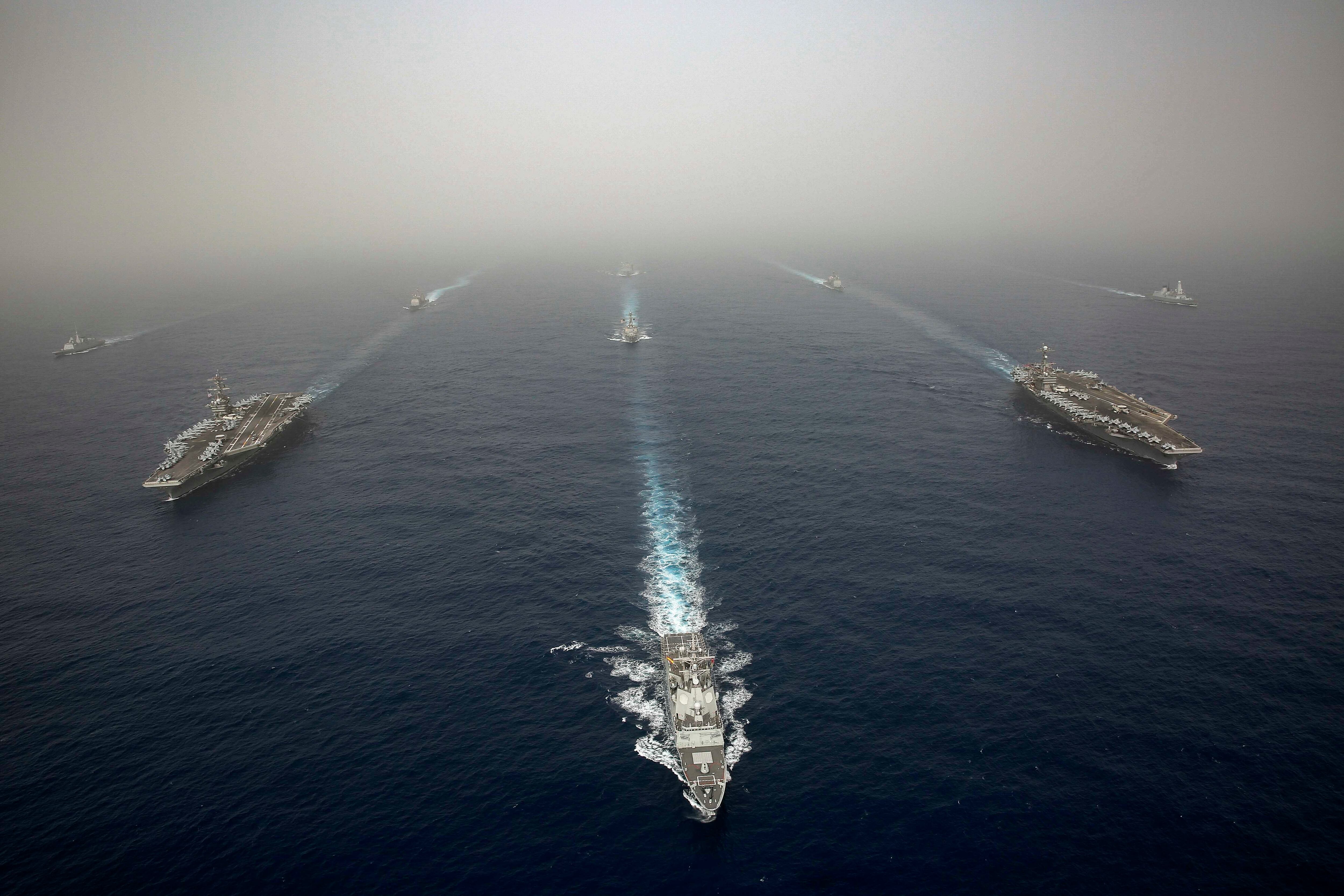The United States has a basic problem: Devising a strategy toward great power adversaries necessitates having some reasonable estimate of their economic and military power. We do not do this especially well.
Ask yourself: Do we really know how much our adversaries spend on their military, and what they are getting for their money? Russia, for example, presents a glaring problem for academic and policy circles alike. Most comparisons are done in current U.S. dollars based on prevailing exchange rates, making Russia’s economy seem the size of South Korea’s. This approach is useless for comparing defense spending, or the country’s purchasing power. Yet, it is used frequently to argue that despite a large military modernization program, and a sizable conventional and nuclear deterrent, Moscow is a paper tiger. As a consequence, the debate on relative military power and expectations of the future military balance is terribly warped by a low-information environment.
The best example of this problem is a recent announcement by the Stockholm International Peace and Research Institute that Russian military spending has fallen to the sixth highest in the world in 2018, at $61.4 billion. Rest assured, or perhaps discomforted: Russian defense spending is several times higher than $61.4 billion, and the Russian defense budget remains the third largest in the world, dwarfing the military expenditures of most European states combined. In reality Russia’s effective military expenditure, based on purchasing power parity (Moscow buys from Russian defense manufacturers in rubles), is more in the range of $150-180 billion per year, with a much higher percentage dedicated to procurement, research and development than Western defense budgets.
Although there are challenges with comparing economies based on purchasing power parity, it would do good to keep in mind that Russia is actually the sixth-largest economy in the world and not long ago was the largest economy in Europe based on purchasing power parity (PPP) — ahead of Germany. Purchasing power comparisons come with their own shortcomings, especially when understanding global financial flows, import/export, and the like, but it helps paint a much more accurate picture than comparing economies by converting their gross domestic product into dollars based on the current exchange rate. If ruble valuation suddenly dropped by 50 percent against the dollar, which it did in 2014, does that mean the Russian economy suddenly contracted by half in one year? No, it doesn’t. Then why is this a useful way of looking at the world and understanding the relative balance of economic power or military expenditure?
RELATED

There is no value in conceptualizing Russian defense spending in U.S. dollars based on the prevailing exchange rate, since Russia does not buy its weapons or major components from the West. Yet, this is how SIPRI arrives at its $61.4 billion figure, which places Russia safely behind France, even though Moscow fields a military that’s almost 900,000 strong, with a conventional and nuclear arsenal capable of taking on the United States. PPP is not without limitations, but it is heavily advantaged when comparing defense spending as opposed to consumer spending, where countries may import a broad range of goods. As a consequence it is not only the most accurate way to compare defense spending in countries using different currencies, but should arguably be the only method of doing so.
The Russian defense budget fluctuates at around 3 trillion rubles, but total military expenditure includes housing, pensions, infrastructure, the National Guard, the Border Guard Service and some line items that are secret. Depending on what you count, total military expenditure can add to roughly 4 trillion rubles in 2018 or about 4 percent of GDP. This also means that a decline in overall military expenditure, as recently reported by SIPRI, does not necessarily mean a reduction in Russian spending on military operations, procurement, R&D, or maintaining the force. There is well over 1 trillion rubles of military expenditure in Russia outside of the regular defense budget.
Moscow spends about half of that defense budget on procurement, R&D, and repair, typically at 1.4-1.6 trillion rubles. As a middle-income country, with conscripts making up close to a third of the force, Russia spends much less on maintaining its military than Western counterparts. This overall level of military expenditure is not only sustainable, but has in practice been sustained throughout the last five years of confrontation, largely unaffected by sanctions.
Rather than consume the government budget, Russian defense spending is slowly declining as a share of GDP, which is in part what makes it sustainable well into the 2020s or perhaps 2030s. Moscow is cognizant of the runaway defense spending that led to the Soviet Union’s demise, at a time of economic decline. The reasons for the spending plateau include a conscious decision by the state to sequester defense spending so as to prioritize national welfare and the simple fact that the Russian military had already procured a tremendous amount of equipment during the first five years of modernization spending. Russian arms exports have also held steady at about $15 billion per year on top of domestic procurement.
Moscow is not exhausting itself with defense spending, but military expenditure as a share of GDP is still too high, reflecting a problem posited by Talleyrand long ago to Napoleon: “You can do everything with bayonets, sir, except sit on them.” It may be convenient to simply believe that something has to give when surveying the stagnant state of the Russian economy and political ossification. However, Russia is not the Soviet Union, spending itself into oblivion as the economy collapses, and we are not living in the 1980s. The truth is that for the foreseeable future, nothing has to give. It can go on, and it will.
Michael Kofman is a Senior Research Scientist at CNA Corporation and a Fellow at the Wilson Center’s Kennan Institute. Previously he served as program manager at National Defense University. The views expressed here are his own.








